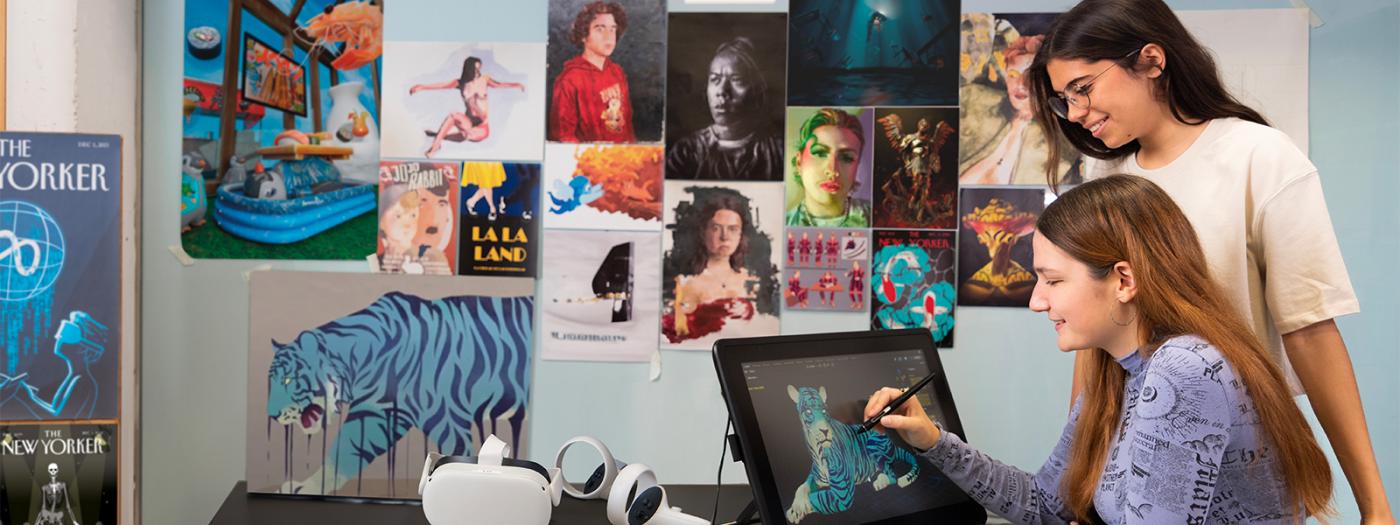Titular Professors
The Learning Outcomes of this course are: The student will know and internalize the nature and characteristics of the
uses and responsibilities of the skills learned during the degree within a framework of a complete visual development
project. Furthermore, they will be able to create projects that demonstrate their ability and knowledge for a
professional portfolio.
Exercise 1: Development of the design of a tribe with visual cohesion based on the process and style of a film, short
film, or animated series. Minimum of 3 distinct character archetypes, 3 environments, and 3 props, vehicles, or
creatures. Partial: Sketches, Thumbnails, Color Tests, Turnarounds, Call-Out Sheets, Moodboards. Final: Final render
and final presentation sheets. 16 sessions/40h.
Exercise 2: Development of the design of two antagonistic factions within the context of a video game. Minimum of 3
vehicles, 3 architectural constructions, and one landscape/environment per faction. Optional characters. Partial:
Sketches, Thumbnails, Color Tests, Turnarounds, Call-Out Sheets, Moodboards. Final: Final render and final
presentation sheets. 16 sessions/40h.
The student will develop two different visual development projects. The first will be oriented towards animation and will
emphasize characters through the visual creation of a tribe, where the concepts of group cohesion, visual relationship
with the environment, and individual role identification will be worked on. The second will be oriented towards video
games and will focus on the distinction and antagonism between two visually opposing factions, where legibility and
quick identification prevail. Both projects will have a partial evaluation and a final one, as well as ongoing
feedback-based monitoring and assessment.
Given that it is a predominantly practical subject, the evaluation will be based on the timely submission of the works corresponding
to the outlined phases.
In English:
Partial Submission Exercise 1: 15%, Final Submission Exercise 1: 30%, Partial Submission Exercise 2: 15%, Final Submission Exercise
2: 30%, Attitude, Attendance, and Professional Behavior: 10%.
Extraordinary evaluation:
Only in cases of exceptionality (accident, illness...), a student who does not pass the ordinary evaluation has the option to pass the
subject in the extraordinary evaluation period.
Evaluation criteria for all sessions:
If the conditions for passing the evaluation are not met, the maximum grade will be a 4.
The student is entitled to a review of the grade on the day stipulated by the professor. During the review, the student's grade may
be increased or decreased.
Use of AI tools: If AI tools are used in any activity, it is necessary to include a paragraph in the activity indicating what
you used the AI for and what instructions you used to obtain the results. Failing to do so is a violation of academic
honesty policies. The use of image-generating AI in the actual visual development (design, sketches, rendering, etc.)
is not allowed, and using AI-generated images as technical references is discouraged.
? Robertson, Scott. Lee, Kang. Yamada, Mike. Yoon, Felix. The Skillful Huntsman
? Gurney, James. Imaginative Realism
? 3D Total Publishing. Sketching From the Imagination
